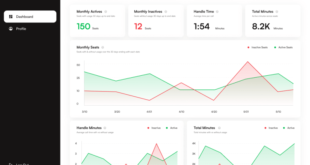
Governments and populations around the world are looking for strategies to ease pandemic lockdown restrictions. Improving how we respond once an infected person is diagnosed can help keep the curve flat while also enabling healthy and recovered people to go out and interact in public again.
The main approach governments are taking to enable digital contact tracing is using Bluetooth technology to trace back contacts of confirmed cases. Once traced, contacts can be quickly and confidentially notified to seek testing, self-isolate, and use precautionary measures.
Initially, when people think Bluetooth, they think of smartphones, as every available smartphone comes with Bluetooth. However, only half the world’s population own and use smartphones.
Fortunately, Bluetooth tags offer an alternative approach for digital tracing. Bluetooth tags are standalone Bluetooth radios that can be deployed in wearable bracelets. Thanks to recent developments in IoT technology, Bluetooth bracelets can cost just a dollar or two and run for 10 years on a coin cell battery. Therefore, in areas where people don’t own or operate smartphones, governments can affordably deploy Bluetooth bracelets. Ideally, Bluetooth bracelets and smartphones can complement each other in enabling an effective digital tracing solution.
Beyond the affordability factor, Bluetooth bracelets also offer a higher degree of privacy than smartphones. A Bluetooth bracelet does not need to know anything about its user’s identity to do its job.
Here is a simplified scenario for how this can work: Say Bob and Emma come in contact at a store. Bob’s bracelet will record Emma’s bracelet’s encrypted message but won’t know anything about Emma. Emma’s bracelet will do the same with Bob’s bracelet. Both bracelets record their interaction on a nearby gateway. (Bluetooth gateways can be very similar to Wi-Fi access points. They can be deployed in dense urban areas to automatically collect the contact records from the bracelets and hence, maintain a database of all interactions. We can also build kiosks in neighborhoods that enable updating bracelets with the online database. The kiosks function as gateways that are capable of rapidly reading the bracelet record. Simply imagine walking by the kiosk to get your bracelet synced up with the server.)
Days later, Bob gets diagnosed with COVID-19. The medical team goes online and flags Bob’s bracelet as a “confirmed case.” The server then instantly flags Emma’s bracelet as “direct contact subject.” When Emma’s bracelet connects to a gateway it will flag a “direct contact subject” message to Emma, possibly using an LED screen. Now Emma can take immediate action to isolate herself, seeking testing and care.
While this is a simple scenario, it showcases the huge potential of an identity-blind digital tracing implementation. It is worth noting that adding an LTE or a Wi-Fi chip to the bracelet can eliminate the need for additional infrastructure (gateways and kiosks). The Peripheral connectivity chip can manage communicating with the online database while the Bluetooth chip does the contact tracing. Other useful features might be added to such a bracelet as well, such as body temperature and heart rate sensors.
How do two Bluetooth radios figure out if they came in direct contact or not? There are two main Bluetooth features that coordinate the determination: 1) RSSI, which estimates the distance between contacts using signal strength. RSSI is simple and inexpensive but provides only 3-5m accuracy. Regardless of its limitations, RSSI can still enable a paradigm shift in contact tracing. An immediate notification sent to smartphones would trigger immediate precautions from exposed individuals. The low accuracy of RSSI means that it can be unreliable in dense urban settings. And 2) Bluetooth direction finding, such as angle-of-arrival (AoA) and angle-of-departure (AoD.) Bluetooth direction finding uses an infrastructure of gateways (which is the backbone of the system. This is analogous to how computers and servers work together to form the Internet) to provide sub-one-meter accuracy contact tracing. The gateways work their magic with the Bluetooth bracelets to precisely determine every tag’s location. This is best suited for dense urban environments such as retail, hospitals, smart buildings, and facilities, and it is already in deployment.
It is worth noting that, existing smartphones, while enabled with Bluetooth radios, are not capable of performing bluetooth direction finding-based tracking capabilities. The smartphones on the market today are best suited for RSSI solutions.
(This article is for general information purposes only and provides a technological overview of one proposed alternative for a rapidly evolving situation. It is not intended to be an endorsement of such alternative nor should this article be construed as public health guidance.)
Asem Elshimi is an RFIC design engineer for IoT wireless solutions at Silicon Labs. He specializes in RF circuit design and electromagnetic structures design.



